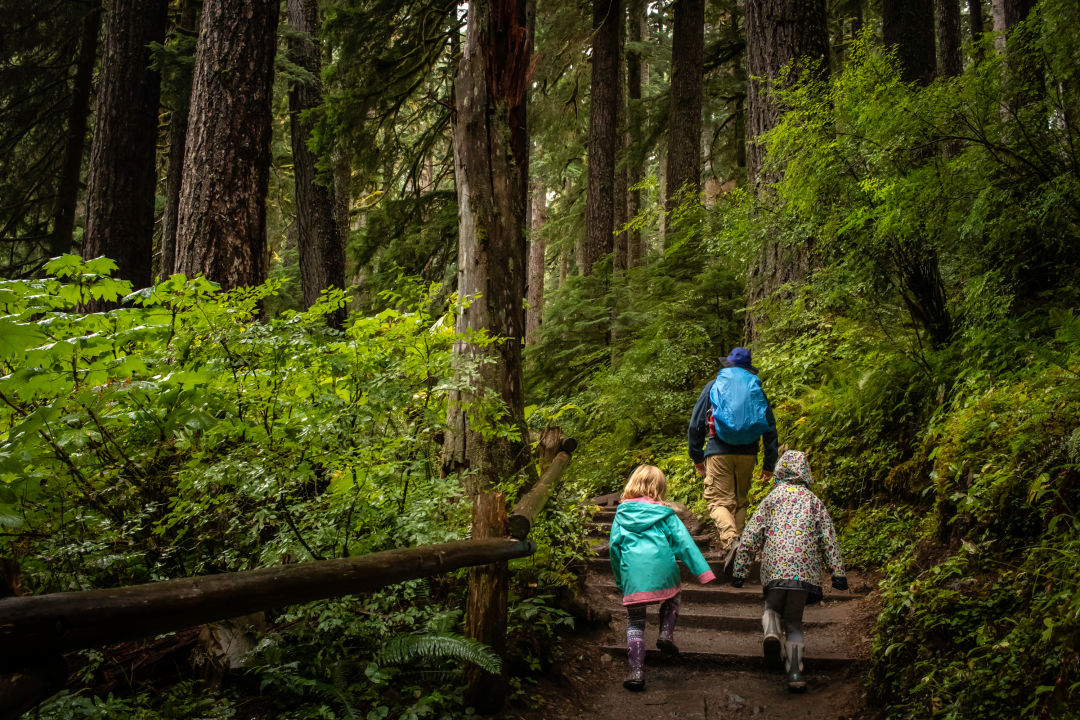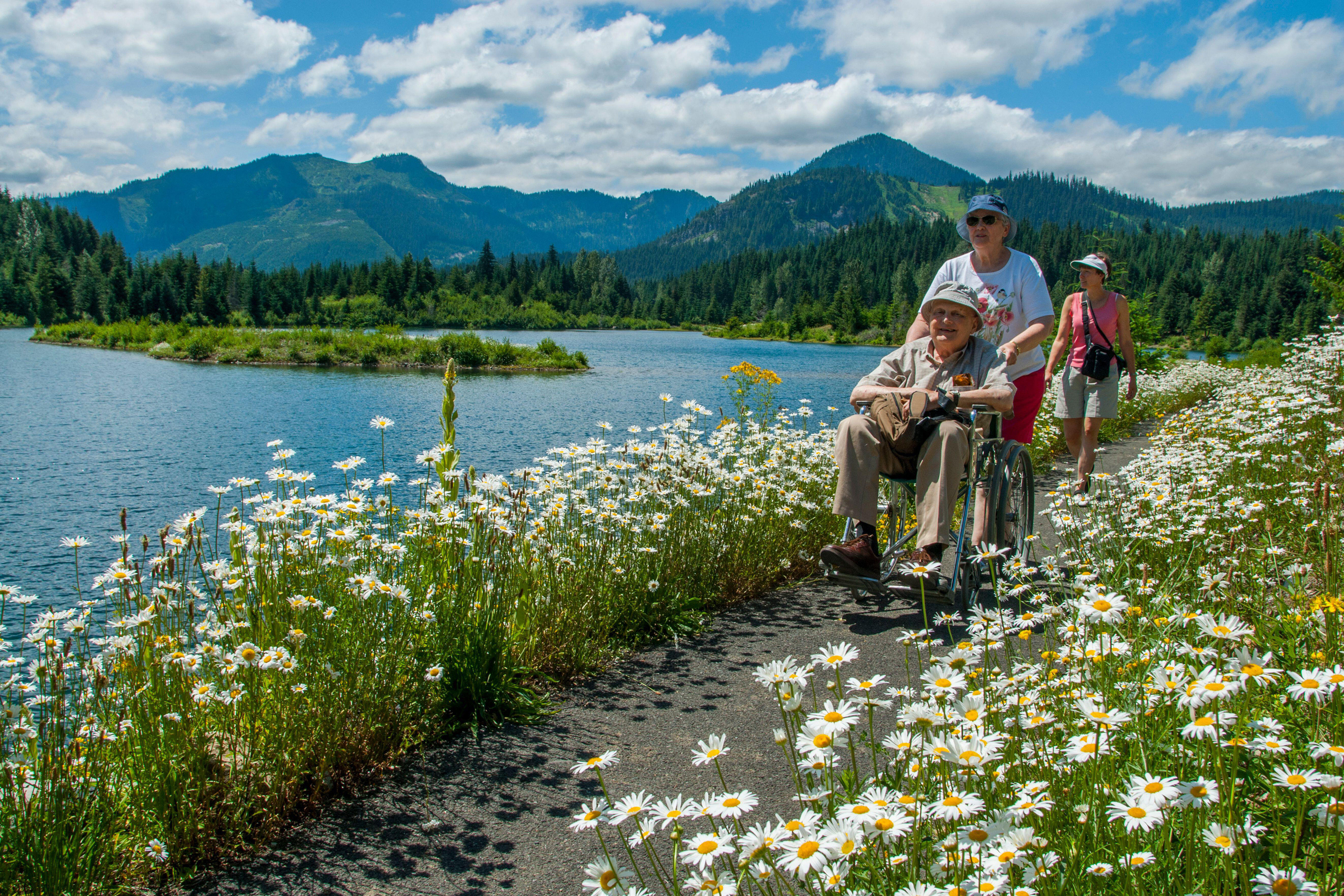Shoulder Season Hikes for National Take a Hike Day

Hiking in the rain is the official Pacific Northwest pastime.
Who put National Take a Hike Day on November 17, in one of the darkest, stormiest months in North America? No one really knows. "The origins of it are unclear," at least to its organization, says American Hiking Society's communications and creative director, Wesley Trimble. Fortunately it's not the only hiking holiday; the AHS created a National Trails Day on the first Saturday of June every year, which makes a heck of a lot more sense.
But along with being National Baklava Day (ooh, try it here), November 17 remains National Take a Hike Day, so we will tell someone to get lost celebrate with a soggy saunter through Washington scenery. Note that high-elevation snow and recent flooding and wind damage may make more remote trailheads dangerous this time of year.
Squak Mountain
Issaquah
Like a forgotten middle child, Squak sits between the more popular Cougar and Tiger mountains in Issaquah, laced with 19 miles of trails in a state park surrounded by King County lands. The most rewarding route is the two miles to the Bullitt Fireplace. The remains of the Bullitt cabin only date to the 1950s, but the mossy stone chimney feels much older, a ghostly remnant cradled by thick brush near the top of Squak Mountain. Standing at the two-story ruin invites calm into a knee-pounding workout; various trails wind downhill through the green embrace of the mountain.
Billy Frank Jr. Nisqually National Wildlife Refuge
Olympia
The name is a well-earned salute to a Native American environmental leader. The Nisqually Estuary trail at the foot of Puget Sound is an easy trek on boardwalks elevated above the tide flats. Spot beavers and weasels, not to mention birds from ducks to waxwings; more than 200 species migrate through the spot annually. One section is in gravel but it’s still largely wheelchair-accessible.
Twin Falls
North Bend
Within an hour of Seattle, access to the 3.5-mile hike to Twin Falls in North Bend is available year-round, unlike many nearby treks. The trail is named for 150-foot waterfalls—there are actually three separate falls—and they cascade beside a route largely made up of wide wooden stairs. Initially, the path follows the river across a small hill before reaching a short bridge. Large boulders are beside the route until it climbs away from the river and through dense forest—think tall old-growth trees. After a washout, a new trail was built in 2016 to bypass the eroded area.
Double Bluff Beach
Whidbey Island
Whidbey's southern shore boasts a beach so sandy you can go barefoot—doing that at most Washington shores is like losing a fight with a pumice stone (but we don't recommend it anywhere in November). The trail is the sandy expanse itself, positioned beneath two towering 300-foot bluffs and wide enough at any tide that you needn’t crawl over driftwood. Dogs are similarly liberated, since it’s quite possibly the biggest leash-free beach on the West Coast. Looking up, Mount Rainier hovers above the Seattle skyline to the south, but the panorama also includes views of Mount Baker, Three Fingers Mountain, Mount Pilchuck, and the jagged Olympic range.
Hazel Wolf Wetlands
Sammamish
Located within city limits, the Hazel Wolf Wetlands are part of a contiguous tract of parks and preserves totaling nearly 800 acres. Many miles of trails traverse these properties allowing for extended explorations. One of the quieter options here—and one free from overexcited mountain bikers—is the hike from the Beaver Lake Preserve to the Hazel Wolf Wetlands. Nearly level, this delightful hike weaves through mature cedar groves and lush lanes of ferns.




